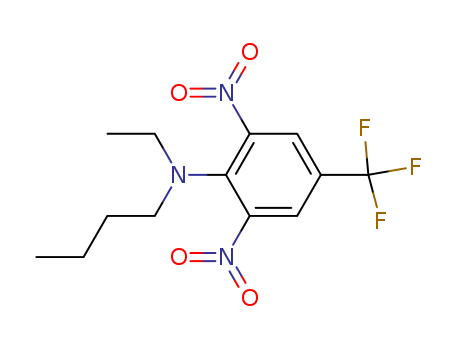- Chemical Name:Benfluralin
- CAS No.:1861-40-1
- Deprecated CAS:87209-90-3
- Molecular Formula:C13H16F3N3O4
- Molecular Weight:335.283
- Hs Code.:29214300
- European Community (EC) Number:217-465-2
- UN Number:3077,2588
- UNII:28224BUY6R
- DSSTox Substance ID:DTXSID3023899
- Nikkaji Number:J1.786H
- Wikipedia:Benfluralin
- Wikidata:Q421520
- ChEMBL ID:CHEMBL1256668
- Mol file:1861-40-1.mol
Synonyms:Balan;benefin;benfluralin



 N
N


